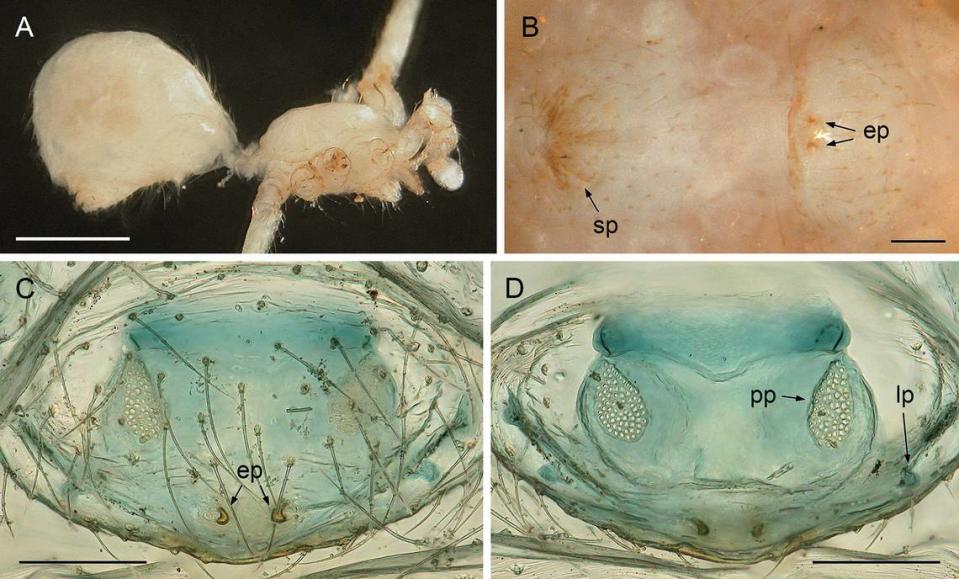Blind creature — named after ‘mythical gnome-like’ animal — found deep underground
Scientists recently pulled colorless and eyeless spiders out from a hole in the ground in Australia.
The pale, blind arachnids are the first cave-dwelling daddy long-legs to be found on the continent, according to a study published on July 24 in the journal Subterranean Biology. The novel species was found in the arid western region of Pilbara.
“Colleagues in Australia have long known that Western Australia and the Pilbara in particular have an interesting subterranean fauna,” Huber Bernhard, one of the study’s authors, told McClatchy News. “Since there are no regular caves there, they have to use wells and other artificial means to access this fauna.”
To access the spiders, scientists lowered weighted nets about 100 feet down into mining boreholes, which had temperatures of around 90 degrees Fahrenheit.
Once at the bottom, scientists gradually hoisted them back up, scraping any organisms into the net through the process. The lowering and raising process was repeated several times.
The collected spider samples were then washed and preserved for further analysis in an ethanol solution.

After measurements were taken on a microscope and genetic testing was performed, it was determined that the spiders belonged to the genus Belisana, which is found throughout Australia and nearby islands.
It was given the name Belisana coblynau after “mythical gnome-like creatures that are said to haunt mines and quarries” in Wales and other countries.
Scientists also discovered another daddy long-legs species on the island of Réunion, about 500 miles east of Madagascar. This spider species was found lurking deep inside lava tubes on the island.
Researchers have been exploring lava tubes, underground passageways created by flowing lava, for years, Bernhard said.
The creature’s distant ancestors likely arrived to the far-flung island on some type of floating material, scientists said.
The newfound spider was also given a mythologically inspired name, according to SciTechDaily, an industry publication.
It was named Buitinga ifrit after “a demon in Islamic mythology that is often associated with the underworld,” according to the outlet.
Scientists often get creative with the naming process, employing nostalgia or humor, Bernhard said, adding that “after naming some 900 species I sometimes have a hard time to find a new name, any name.”
There are over 40,000 known spider species worldwide, of which about 2,000 reside in Australia, according to the Australian Museum.
1,400-year-old village — with burial ground and colorful ceramics — revealed. See them
700-year-old weapon unearthed by metal detectorist searching forest in Poland. See it
Baby ‘snot otters’ vanished from Indiana waterways decades ago. Now they’ve reappeared

